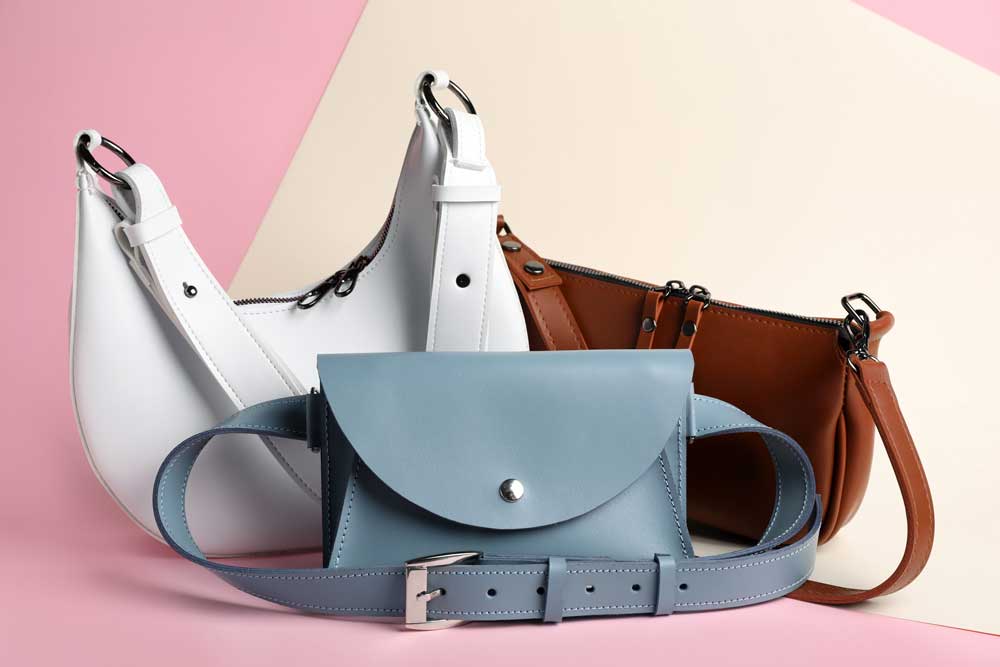‘You can tell a lot about a person from their bag’, said Madonna. She’s not wrong! Handbags today aren’t just functional accessories. They’re fashion statements. More importantly, they’re status symbols. The right bag can enhance your outfit beautifully and speak volumes about your social and financial identity. However, a century ago, handbags became a symbol of women’s emancipation. Let’s rewind a bit, to understand the evolution of the handbag and how it ties up with the women’s liberation movement.
To begin with, the world didn’t have ‘handbags’ as we know them today. There were pouches made of animal skins, leaves, or bark, primarily used to carry coins and perhaps other knickknacks. Egyptian hieroglyphics have depicted only men carrying little money sacks around their waists, revealing that at the time, only men would handle money. Ancient mummies and icemen have also been unearthed with pouches, reiterating this practice.
This was pretty much the case with most cultures, where men were allowed pouches that eventually evolved into satchels. In addition, men’s clothes started being outfitted with pockets in the 1600s. So, they had double the advantage and carried their belongings along quite comfortably.
Women were not given the luxury of carrying any such accessory. Nor did their dresses come outfitted with pockets. It was considered unladylike and not at all appropriate. A hand fan? Perhaps. A parasol? Of course. But not a bag or even a pouch. And so, women innovated. They came up with a little pouch to be worn under their skirts and tied to the waist. This wasn’t very practical or becoming and so, over time, it became socially acceptable for a woman to carry a tiny, delicate, decorative bag. This was called a reticule. Although it wasn’t practical or durable, it was better than nothing. Besides, the dressier and more embellished the reticule, the wearer's status was elevated.
In India, potli bags were carried by both men and women, but as they were originally devised to carry ancient herbs, they weren’t very practical either.
The term ‘handbag’ didn’t emerge until the 19th century, when it was originally used to refer to the luggage people carried by hand in trains. In fact, popular handbag brands started off as luggage makers – like Louis Vuitton, Hermes, and Mulberry. They then took the idea of a suitcase and modelled it into a structured bag that was sturdy, had pockets, a strap, a clasp… everything a woman needed!
During World War I, women started entering the workforce and started travelling alone as well. They had salaries and bank accounts, so it was really quite ridiculous that they couldn’t carry something as essential as a bag. Besides, their newfound financial freedom meant they had to carry money, papers and other essentials. This is the moment women’s handbags began to make a political statement.

Women from the working classes would wear crossbodies or satchels and socially upward women would carry totes. The larger the bag, the more it symbolised gender equality. This trend was further reiterated during World War II, cementing the position of handbags as a woman’s essential.
However, there was one other major change: bags started becoming beautiful instead of functional. And herein lies the irony. It was only when bags were seen as a fashion accessory rather than a utilitarian one, that it became accessible, even desirable to women. In a way, this is also perhaps why, despite the evolution of women’s clothing, we have always lacked proper pockets; to ensure we keep buying bags.
Says stylist Madhavi Iyer, ‘Handbags are more than just a status symbol. They are a reflection of your personality and also shape people’s perceptions of you. Tote bags could mean that you prioritize functionality as much as style, with multiple pockets to fit in essentials. A clutch bag is a symbol of understated luxury and sophistication, while a backpack is for travellers and practical working women. Crossbodies are for women who love comfort and satchels are a smart, polished professional bag. Unlike shoes, bags are a more versatile accessory that can be styled however you like - on the shoulder, tucked under your arm, in your hand, with a scarf tied around the handle... the options are endless.’
The beautiful part about a handbag is that it is so public, and yet, so private and intimate. What’s in a bag defines you and mirrors your soul. Dig in and you’ll find little bits of your life that mean something personal. Your daughter’s rogue hair clips. An expired lip balm from 2020. Misplaced change from six months ago. A half-eaten protein bar. Boarding passes from that weekend getaway with someone special.
Today, some women view the handbag as a burden, choosing to wear practical dresses and trousers with deep pockets for essentials (whenever they can find them!). And yet, there are women to whom a handbag continues to remain important. When Kajol was interviewed on a popular talk show, the discussion veered to designer handbags and her response went viral. Clearly, Kajol doesn’t care for brands. Her concerns are practical – front zips, back pockets, and the ability to carelessly throw your bag on the floor without giving it a second thought. And this, perhaps, is the uniqueness of a handbag and the women who wear them.
We can now choose what we want, and that perhaps is where our real freedom lies.